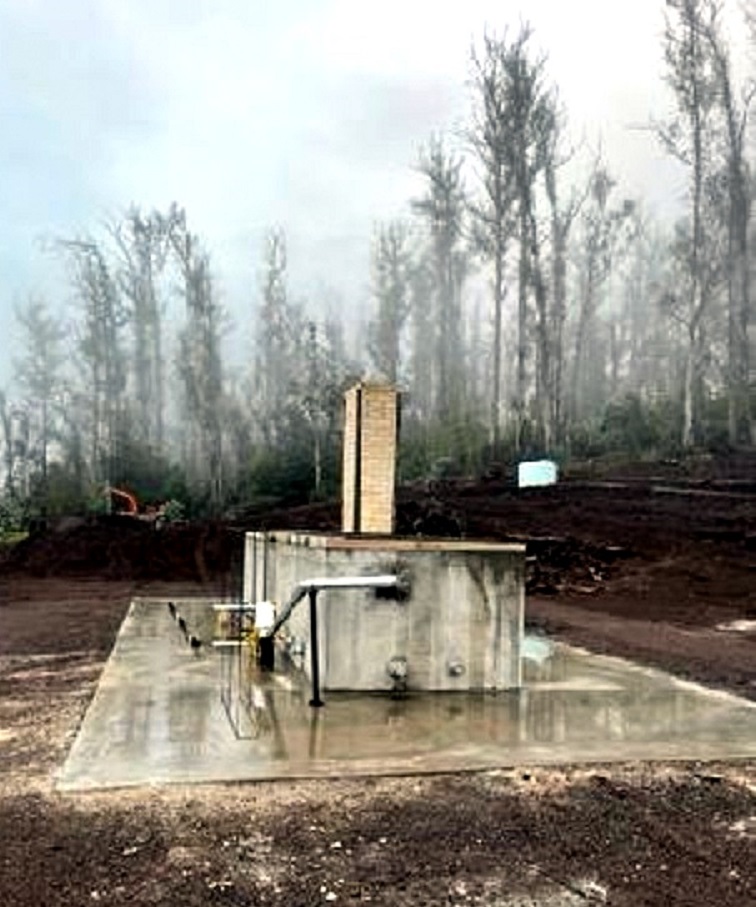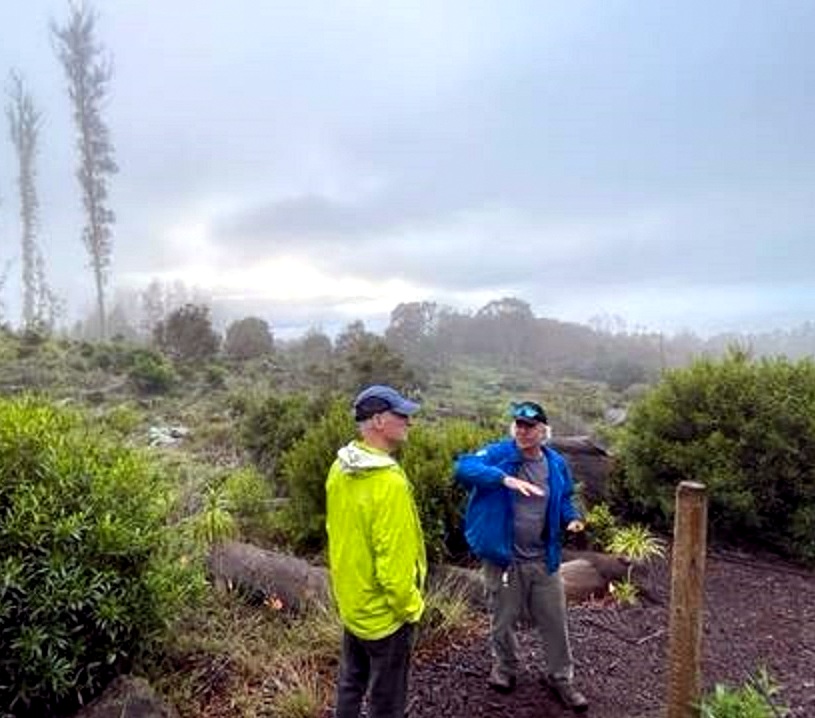Ecological Restoration Using Biochar
Biochar for land and forest restoration (credit: Thomas Howe/Haleakala Biochar)
Mark Twain visited the Hawaiian islands in 1866 and he considered them one of the most beautiful places on Earth. He said they were the:
"loveliest fleet of islands that lies anchored in any ocean. I feel the spirit of its wild lands, I hear the splash of its brooks; and in my nostrils still lives the breath of its flowers"
Little could Twain have expected that large portions of those once verdant isles he visited in the mid-19th Century would become 'weed patches' by the middle of the 20th. However, by applying principals of ecology, new technology, and managing the recovery process, projects are underway to reverse some of the damages and revitalize landscapes that are now covered in invasive species.
Biochar is a natural bi-product manufactured from biological waste and is being used to restore degraded lands on the island of Maui. An excellent example is underway to remove an invasive tree originally from Australia and replanting native Hawaiian trees. The US Forest Service advises using biochar if large volumes of wood waste is available after dead or decadent vegetation is removed to reduce the chance of wildfires. Previously, the wood waste was piled and burned or left to decompose on site. When converted to biochar, the organic product offers opportunities to economically restore degraded landscapes, small or large.
Biochar is produced by pyrolysis, the heat-driven conversion of organic matter under conditions of low oxygen and high temperature. The process is similar to making charcoal but at lower temps. The debris is shredded into a uniform size, loaded into a sealed reactor, and 'cooked' under this lowered condition. The resulting black biochar has unique chemical and physical properties including high structural porosity that allows for excellent absorption of water and plant nutrients. The biochar maintains these constituents in soils when added, like a compost, and becomes a stable, slow-release source of carbon, nitrogen, and other minerals necessary for excellent plant roots as they become established. It has wide utility for soil regeneration, plant growth, and in sustainable agricultural.
A local Maui company, Haleakala Biochar, produces this natural product from wood waste produced when removing non-native Eucalyptus, Gum trees, introduced to Hawai'i from Australia in the 19th Century. The trees are now a weed that produces copious volumes of seeds that are dispersed on the winds. The trees also affect their local environment by leaching toxic chemicals from their leaves. Those compounds inhibit the germination of non-Eucalytpus species allowing them to dominate once-diverse, native forested lands in Hawai'i. This invasive tree, along with several invasive fodder grasses used by cattle ranches, contributed to the massive fires that consumed parts of the island in 2023. Nature Magazine showed how the availability of such flammable species fueled deadly blazes elsewhere in the world where they had been widely planted.


Biochar reactor and landscape restoration project on Maui (credit: Thomas Howe/Haleakala Biochar)
Haleakala Biochar is located on the slopes of Mount Haleakala, the massive volcanic crater set aside in 1916 as a national monument under the Antiquities Act. Their biochar is used in agricultural, home garden, forest restoration, and storm water filtration projects to help regenerate soil fertility and rejuvenate water supplies into dry creeks. Removing the Eucalyptus and converting their residues into biochar has allowed for restoration of native trees where once they had flourished. The revitalized native forests have become restored habitat for endangered wildlife including the endemic Hawaiian honeycreepers. Streams once dry, having being desiccated by the water thirsty Eucalypts, have begun to flow again.
Restoring balance to any damaged landscape, river, or marine environment requires the application of ecological principals; developing 'buy-in' from affected individuals or communities; and managing the process to realize the best chance of long-term success. When this approach is followed, the results can be remarkable and offer hope for even further recovery. The Company's founders follow a mindful motto coined by the environmental writer Wendell Berry:
Care of the Earth is our most ancient, most worthy, and most pleasing responsibility. To cherish what remains of it, and to foster its renewal, offers legitimate hope.
With wide application of projects in landscape and forest renewal across Hawai'i, visitors may again see beautiful and verdant views someday like those Twain so relished. More people elsewhere are turning to this 'Swiss Army Knife' for environmental restoration as well. WHB